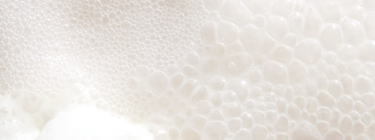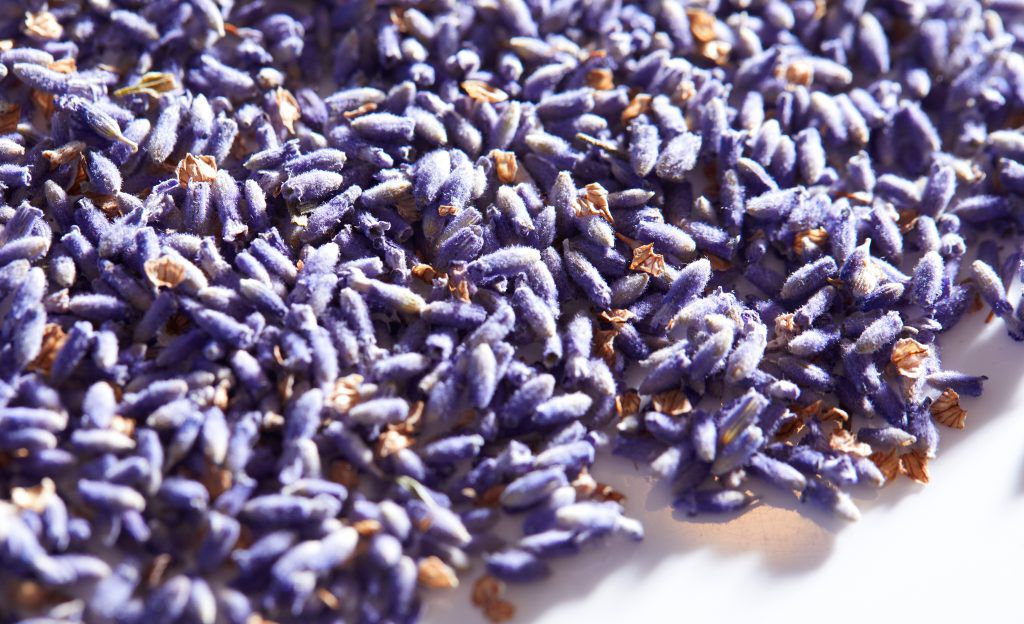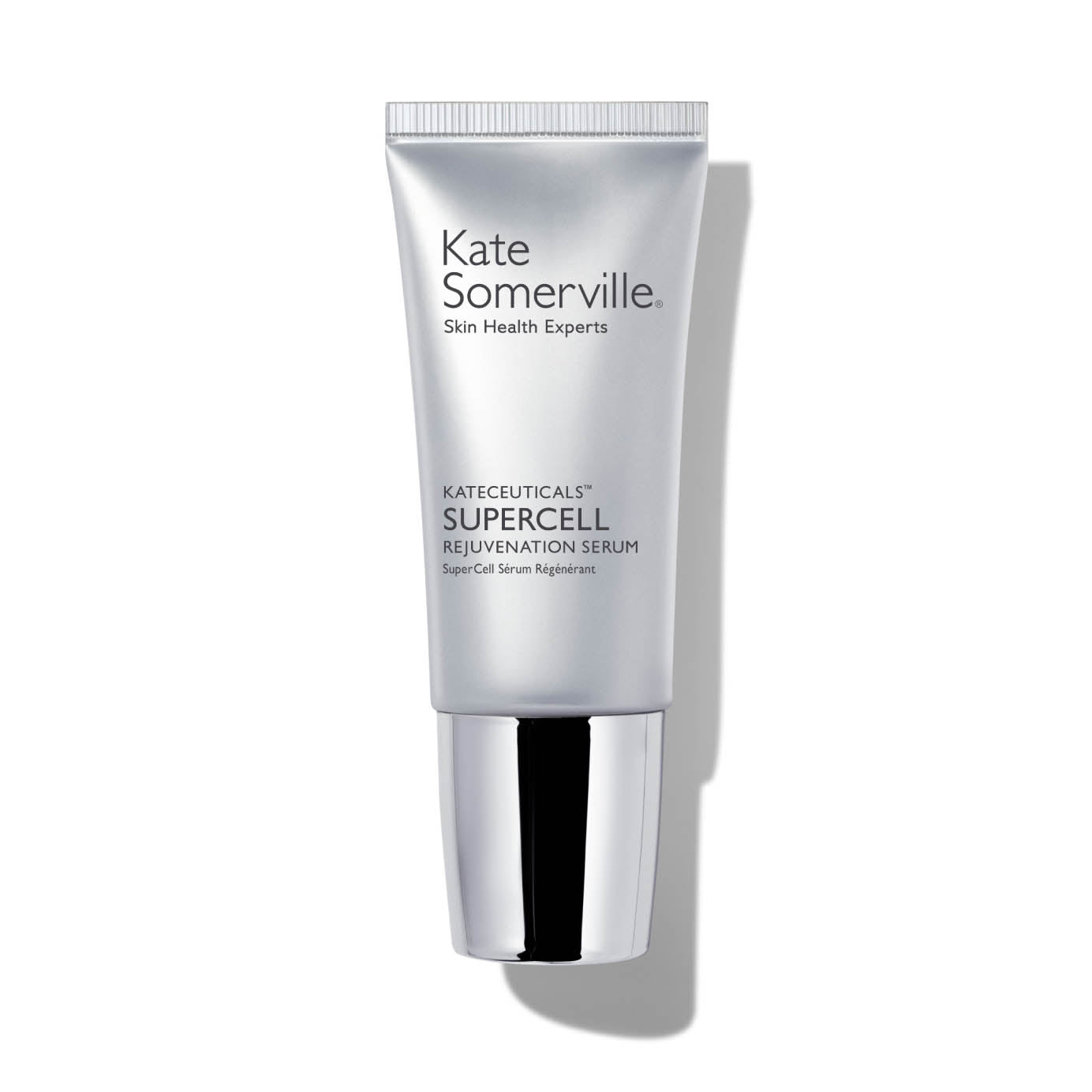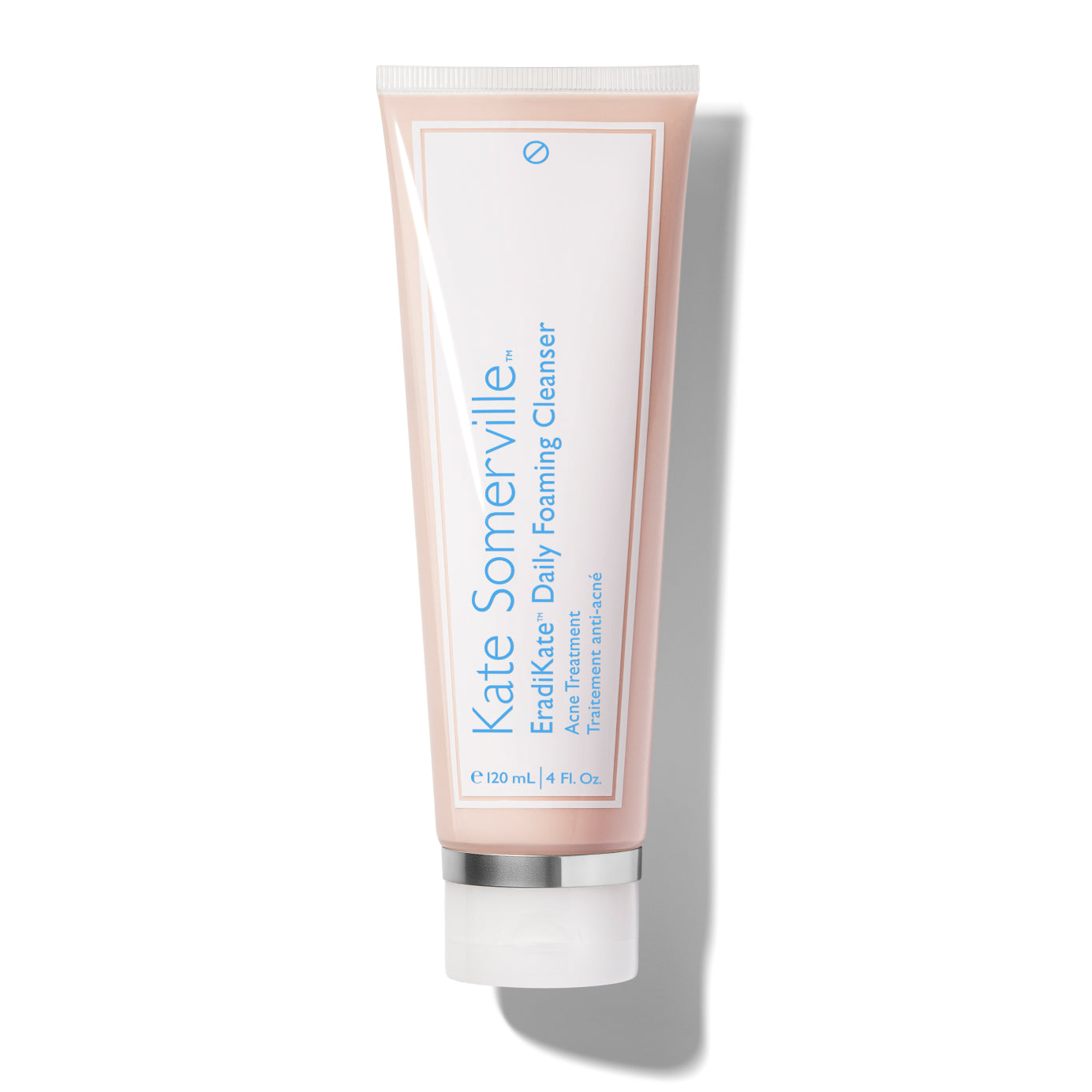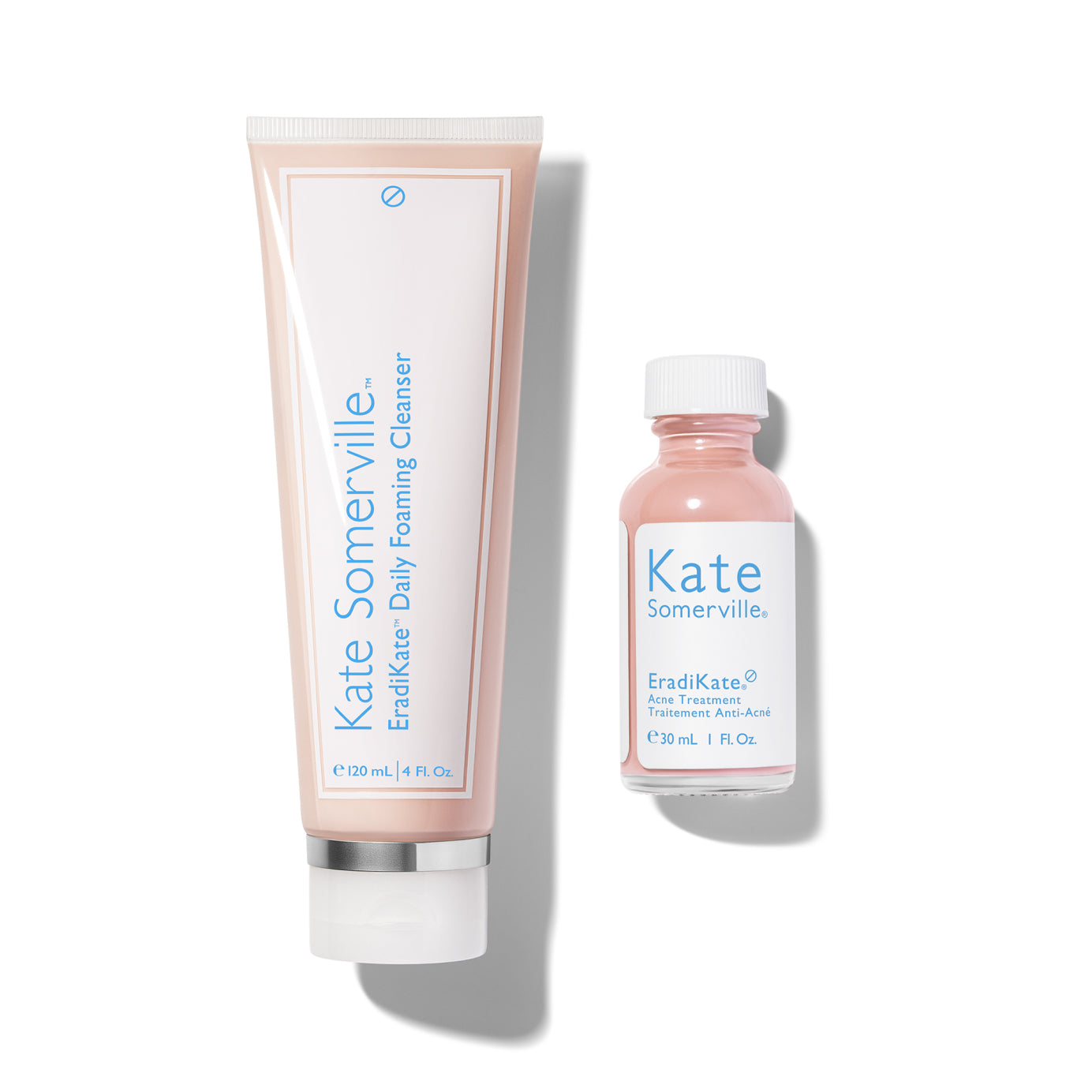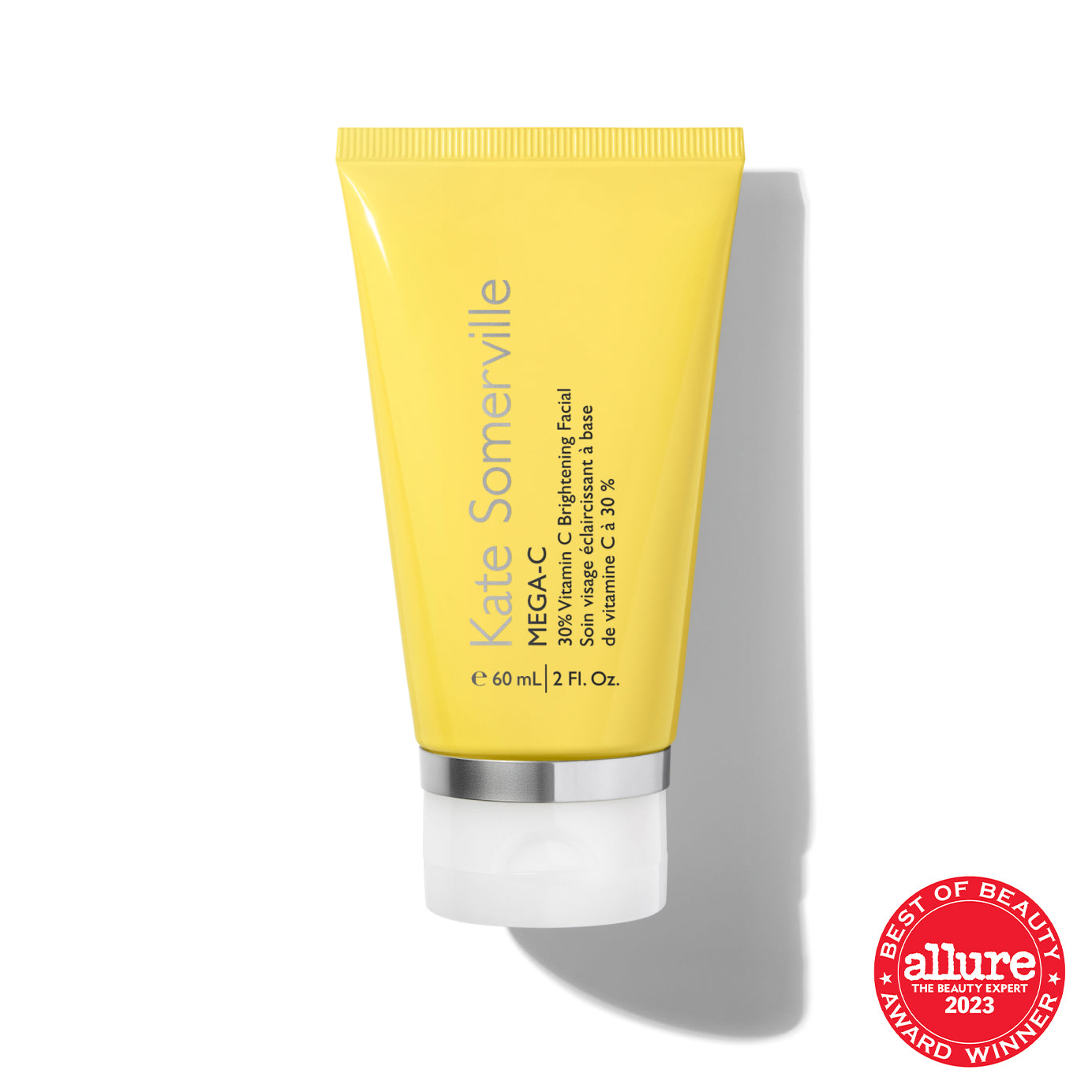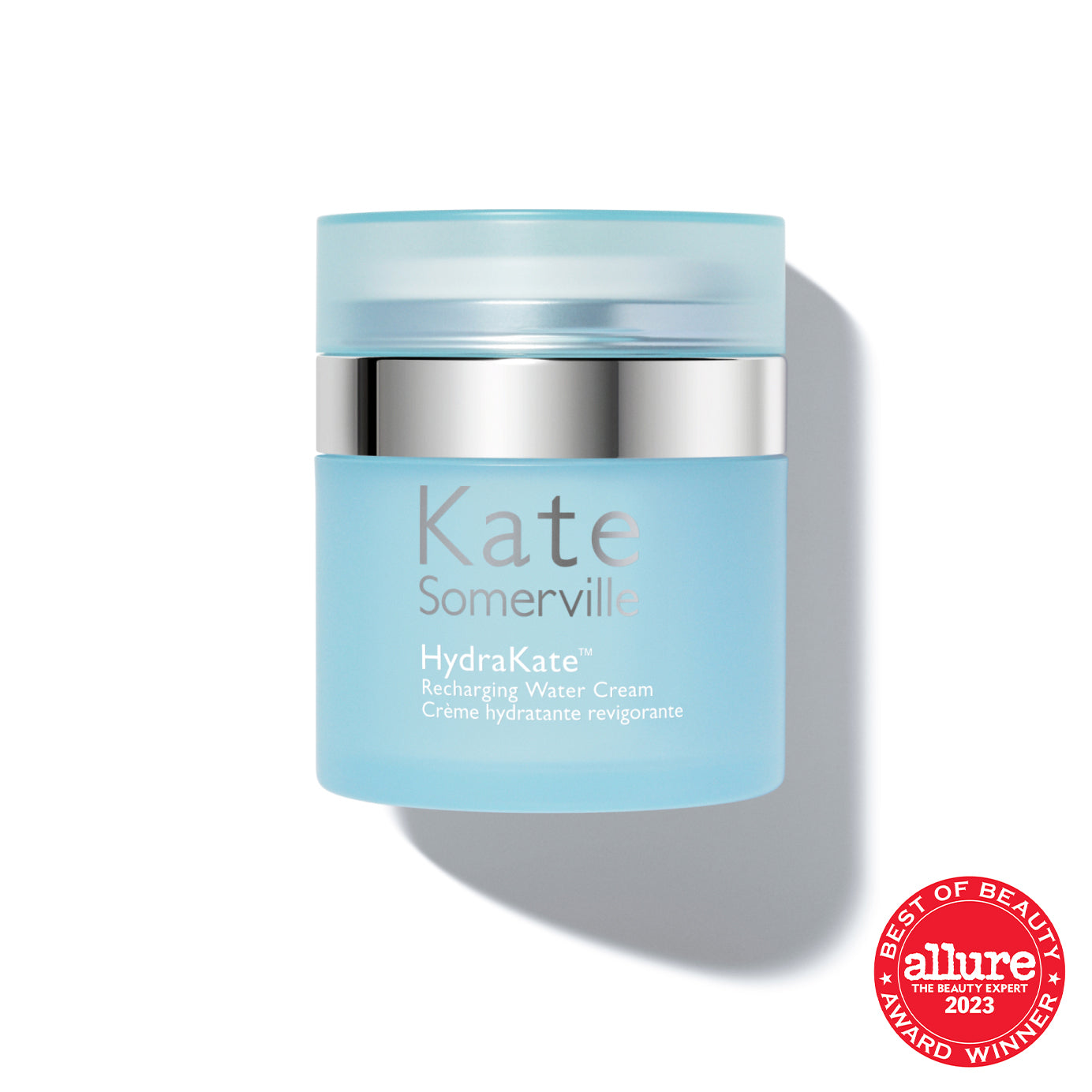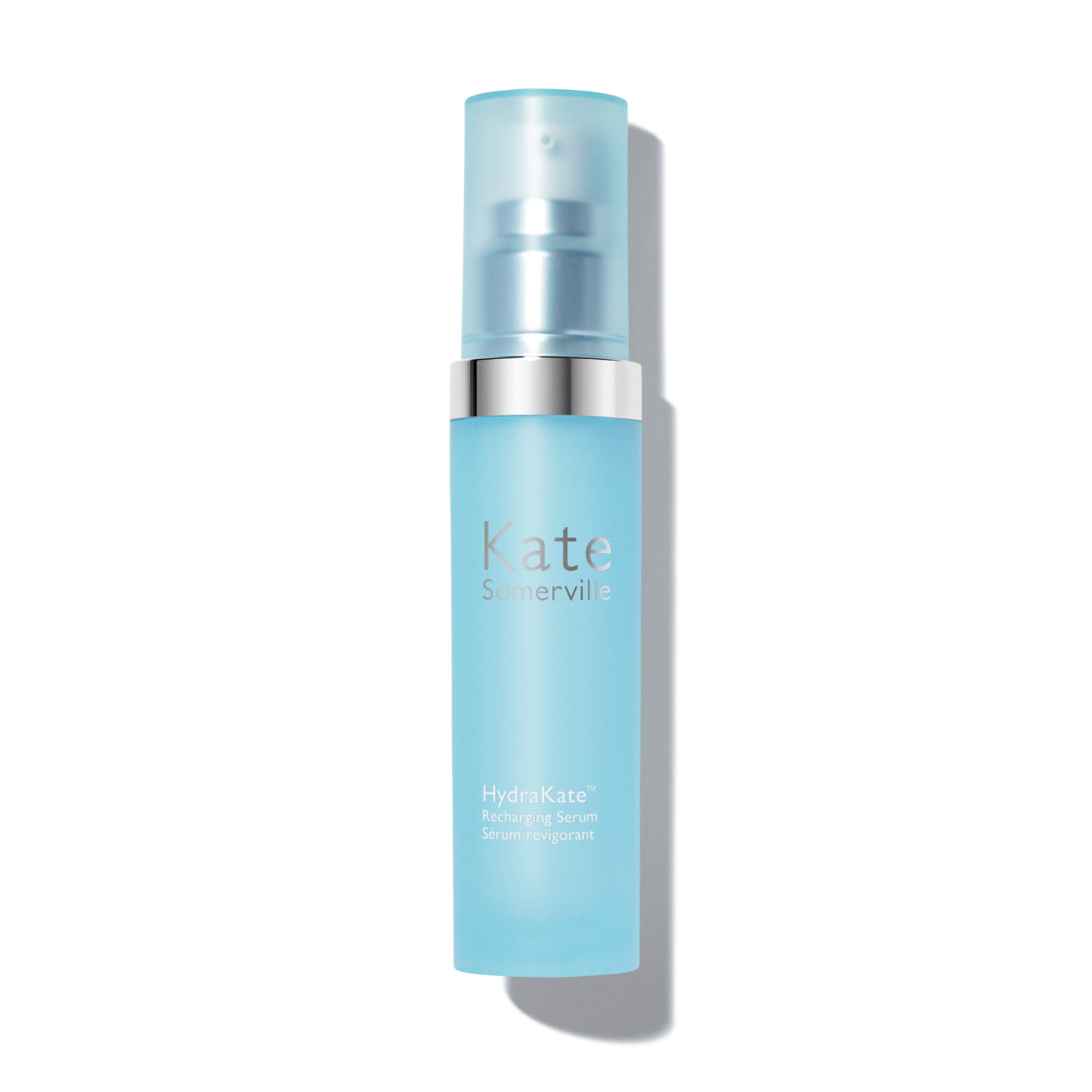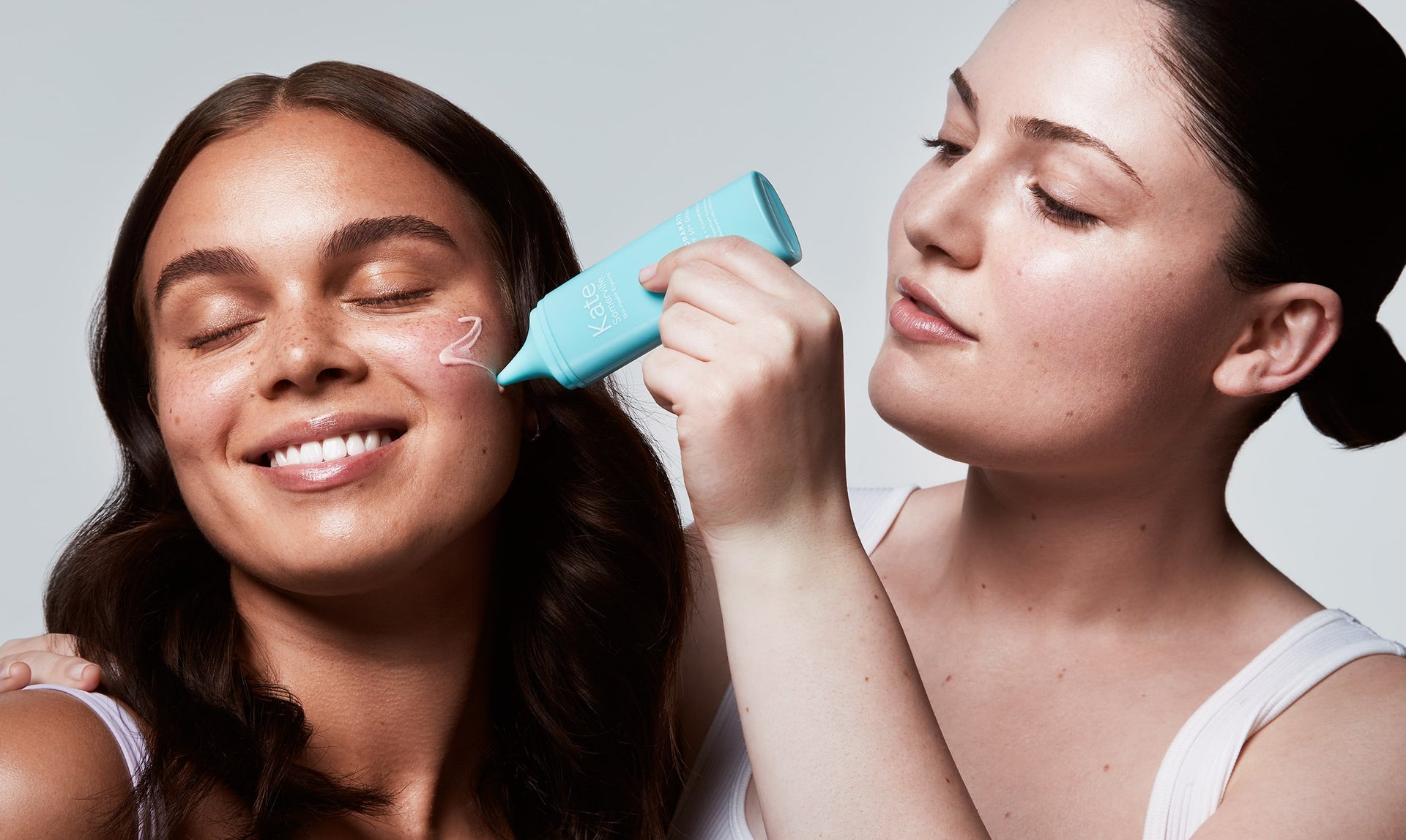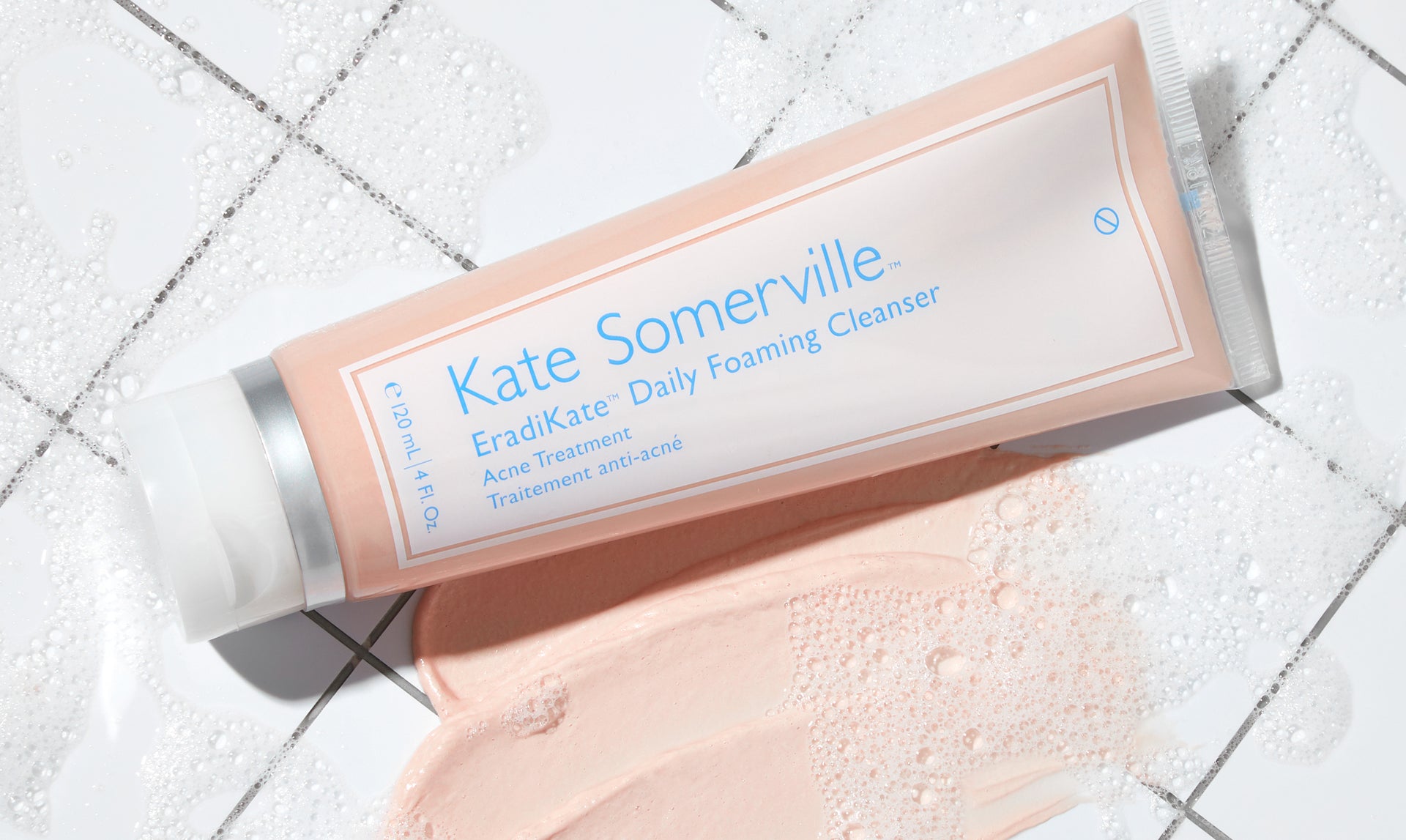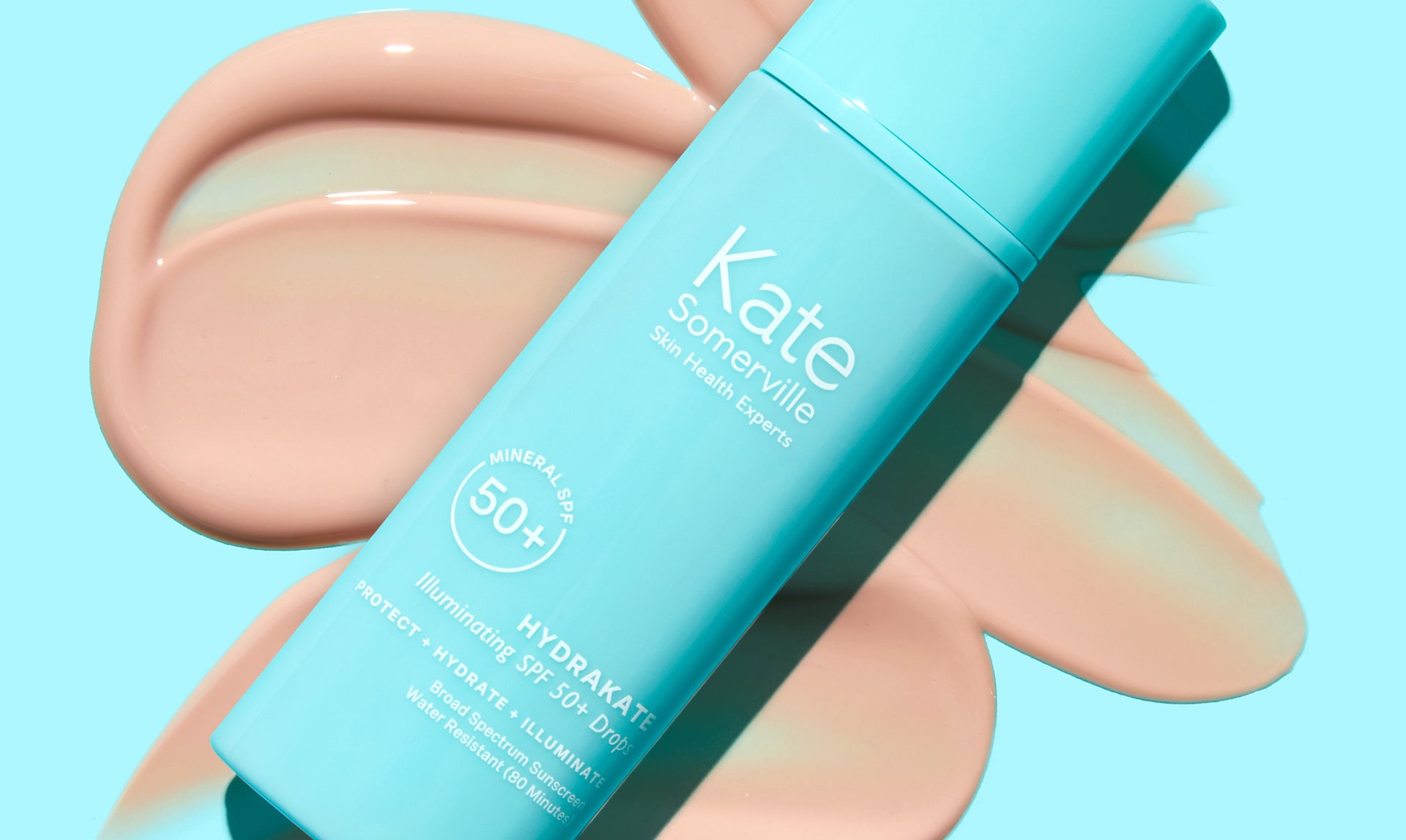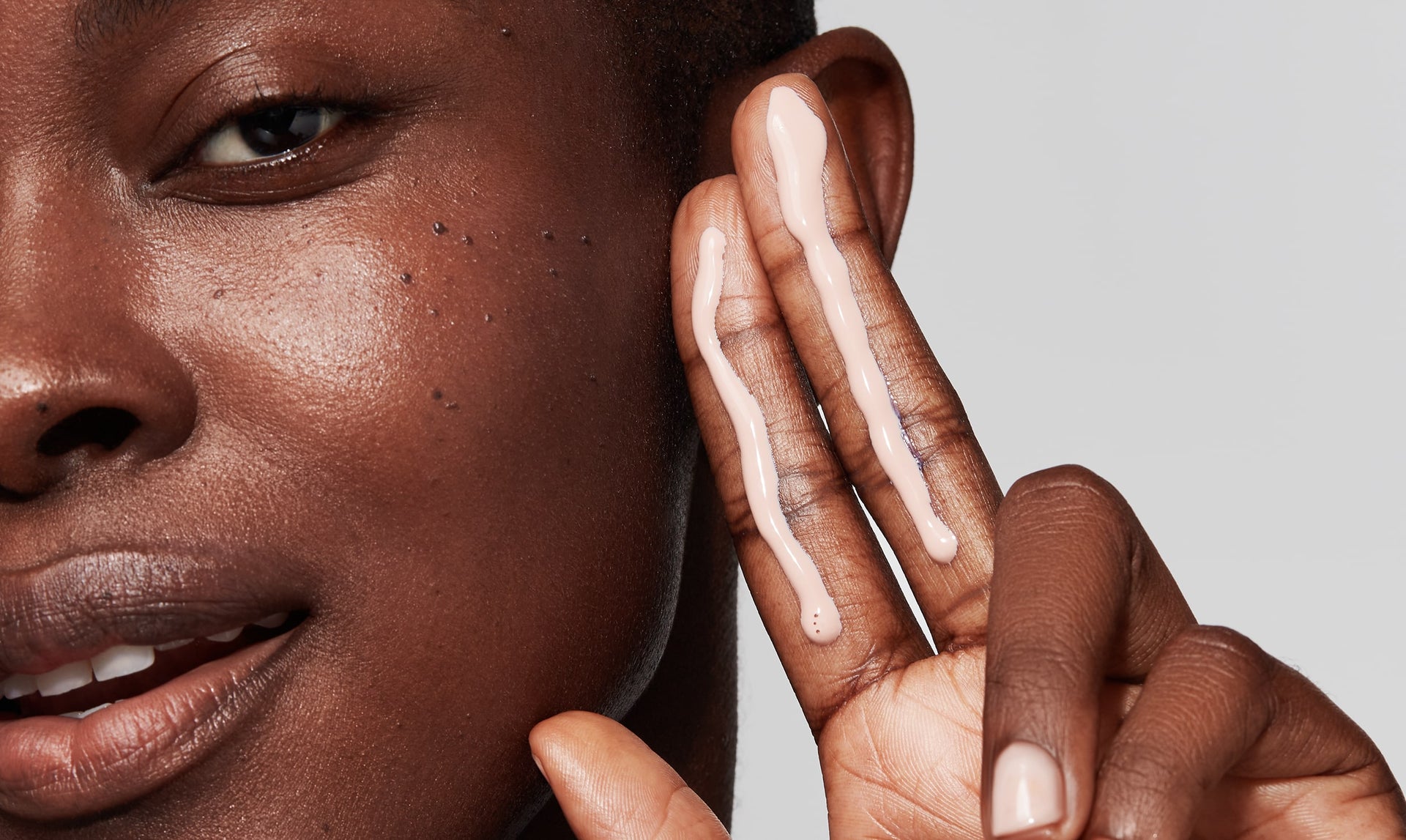In the skincare matchup of cleanser vs. toner, it’s not an either or situation. Both are beneficial to skin in their own ways. Many skincare devotees swear by both products as part of a regular skincare regimen. In many cases, both cleanser and toner are necessary to complement each other and reap the full benefits of each. Cleansers comes in various forms, including foam, gel, cream, and oil-based, while there’s typically one type of toner, although there may be different ingredients added to each. Whether you choose a gel cleanser or a foam face wash, these come first in your daily skincare regimen as they set the foundation for clean skin, removing dirt, oil, makeup, and other impurities.
As Skin Health Experts, we always start with an individual client’s skin needs. And that exploratory process begins when you identify your skin type and challenges. Does your skin suffer from recurring redness? Are you oily-prone? Do you struggle with dry skin? Are you trying to prevent wrinkles or fine lines? Our premium skin care face cleansers and toner contain a formulated blend of active ingredients, botanical extracts, and natural oils to help restore the skin and give it a healthy glow. Many also address specific skin needs or challenges or are formulated for a specific skin type.
Different skin experts have different approaches to a daily skin regimen. Our signature approach to daily skin care is as follows:
- Cleanse with the right face wash for your skin type or concern morning & night
- Exfoliate 1-2 times per week depending on your skin type (or use a toner)
- Hydrate with a hyaluronic acid treatment morning & night
- Treat specific skin concerns with serums morning & night
- Moisturize with the right cream for your skin type or concern morning & night
As you can see, there’s room for both a cleanser and a toner in our approach to skin health. And now that you recognize cleansers and toners as valuable players, here’s how to find the right ones for you and your skin.
What Is a Face Cleanser?
As the first step in any skincare routine morning and night, cleansing is a must. Your face wash does just that – it washes your face, clearing away dead skin cells, unclogging pores, removing impurities from the skin, and leaving the skin feeling fresh. A plain bar of soap will technically clean the skin, but it generally does not give your face what it needs to stay hydrated and blemish-free. Choose a facial cleanser that has a mix of ingredients that will benefit your skin needs most.
Foaming Face Wash
As the name suggests, this product starts as a gel, liquid, or oil and creates a rich lather when mixed with water. The foaming action works to get deep into pores to clear away dirt, excess oil, and other impurities that clog the skin. Lightweight, it helps to soften and condition at the same time. Rinse the suds away thoroughly and pat the face dry with a hand towel before proceeding to the next step in your skincare lineup.
The Kate Somerville ExfoliKate® Cleanser is one of our best selling products. It’s a daily foaming wash that works well with most skin types. Its key ingredients are glycolic and lactic acids which help to minimize the appearance of pores and clear dead skin cell buildup. Pineapple, papaya, and pumpkin enzymes exfoliate dead skin cells and digest them, leaving skin radiant and clear. It’s also an effective makeup remover as well when you do a double cleanse in the evening. As a go-to face cleanser, this product tops the list.
Gel Facial Cleansers
Foaming face wash is generally best for those with sensitive skin who need a gentler cleanser. Gel cleansers work well to unclog pores and remove makeup. It’s not uncommon to use more than one form of cleanser. You can switch what you use depending on the season. Our founder Kate even switches up her cleanser from morning to night!
If your skin tends to be oilier in the summer months, a gel cleanser may be optimal to thoroughly get rid of any excess sweat and dirt on the face. Or, if your skin suffers from redness or extra dryness during the colder months, a soothing foaming cleanser may work better.
Natural ingredients like soapbark tree extract, lavender essence, and natural sage oil are the key ingredients in Kate’s gel-based Gentle Daily Wash. It’s free of sulfates and is an ideal accompaniment to your regular skincare routine. It only takes a small amount massaged into the face and neck twice a day to help maintain healthy skin.
Cream Cleansers
Cold creams have been a popular beauty staple used throughout the years, but the formula has changed quite a bit from what you might initially envision. In addition to the heavy, thick cream cleansers, there is now the option of a lightweight, whipped cream cleanser that many find preferable. It still gets deep into pores to remove all dirt and makeup and leave the skin feeling soft. When you have the right cleanser, it takes away the separate step of removing your makeup.
What Is Toner?
By definition, a toner helps remove dead skin cells and other impurities from the face and neck. So while it’s like a cleanser, its job doesn’t just end with keeping skin clear. It also helps to provide hydration and soothe the skin. So which comes first – cleanser or toner? Our Skin Health Experts recommend cleansing as your first step in any skincare regimen. You can follow cleansing with exfoliation twice a week using the Kate Somerville ExfoliKate® Intensive. However, the rest of the week, we recommend following your evening face wash with a gentle toner like our Liquid ExfoliKate®. Its triple acid blend resurfaces skin while you sleep and also helps prep skin for the rest of your evening regimen.
After your face and neck are clean, using a skincare toner will help open the pores and allow your remaining regimen – hydrate, treat, moisturize – to be fully absorbed into the skin. Each of these steps has a specific role in promoting healthy skin and it’s essential to be consistent and follow our recommended protocol in the right order to get the most benefits from each skincare step.
Now, because there are so many skincare products to choose from – and it’s often a challenge to separate products that truly help with those that are all about hype – we recommend working with a skincare expert who can advise you on the best products, ingredients, and regimen for your skin type, top skin concerns, and specific skin needs.
When it comes to selecting the right toner for your skin, keep in mind that toner comes in liquid form only (it looks like water) and you want to look for active ingredients that will help with your specific skin needs. Here are some common ingredients found in toners.
Aloe Vera
Aloe vera is a natural, gel-like substance that’s known for its healing and soothing properties. It helps to calm the skin and almost serves as a balm for redness and inflammation. It’s been an organic remedy for sunburns thanks to the cooling factor because it feels good on the skin and leaves it feeling refreshed and “awake.”
Tea Tree
Tea tree is another ingredient commonly found in toners because of its healing properties. Its traditional use was to help heal cuts and wounds, but today it’s used for conditions such as insect bites and acne. Like aloe vera, it also helps to calm irritated skin.
Witch Hazel
Witch hazel is also associated with toners. Many use it as a natural treatment to help soothe the skin and reduce inflammation, similar to aloe vera. Although these are natural products, it’s best to test any new ingredient on a small area of the skin first to check for any allergic reactions or side effects.
All of these are inexpensive, easy-to-find ingredients. When blended with other active acids and extracts to create specially-formulated products, they can help improve your skin over time. Ingredients to avoid in your toner include sulfates and mineral oils. Stick with natural extracts and acids as much as possible for the best kind of treatment. It will help to prevent any negative skin reactions to products and help your skin feel its best.
Using Cleansers and Toners for Your Skincare Routine
Knowing your skin type and which ingredients best support your skin concerns – from age repair to acne support to rehabbing skin sensitivity – are essential building blocks to a healthy skin care routine. Regardless of skin type, everyone should use a daily face cleanser. And most people can benefit from adding a toner to their regimen. Other crucial steps include exfoliating regularly with one of our ExfoliKate® products, hydrating with a hyaluronic acid product like our DermalQuench Liquid Lift®, treating specific skin concerns with a high-concentrate serum like our Kx Active Concentrates serums, and moisturizing with the right cream for your skin type and goals. And don’t forget to add an eye cream as you get older, PLUS daily SPF protection in the morning. Each treatment has a different function and they all complement each other to promote healthy skin.
Choosing the Right Cleansing Product
The right cleansing product for one person may not work as well for another. Know what your skin needs and how your skin reacts to certain ingredients. Determine if you have oily, dry, or combination skin. Oily skin often leaves an extra layer of shine on the skin. It also can lead to more breakouts as the oils build up and clogs the pores. Use a cleanser or toner with salicylic acid to help reduce pore size and balance out the skin.
Dry skin longs for ingredients like hyaluronic acid to give it the instant and lasting hydration it needs. The winter months and change in climates from traveling or being in and out of air-conditioned areas can all contribute to dry skin. Also, a lack of water intake or a poor sleep schedule can leave the skin looking dry, flaky, and dull. You may find during these specific occasions or seasons that you want a cleanser specifically suited for dry skin.
Combination skin often is defined as having an oily t-zone and drier patches along the rest of the face. The trick here is to find the right blend of ingredients that can absorb excess oil without stripping your face of its natural moisture. If you have combination skin, you may use one product on your t-zone, like a cleansing mask or toner to help keep oil at bay, and use a gentle cleanser overall.
Also, consider if your skin is sensitive or prone to redness or blemishes. This will also factor into the type of cleanser and toner that will work best with your skin. Shield your face when out in the sun and always apply sunscreen (regardless of skin type). There are many benefits of sunscreen, which is why you should be wearing it everyday before you even leave the house. Steer clear of any ingredients that will irritate your skin or clog your pores. Note that cleansers with harsh ingredients like alcohol or sulfates may do more harm than good. Instead opt for the use of natural ingredients found in our skincare line that will help you achieve a beautiful complexion.
